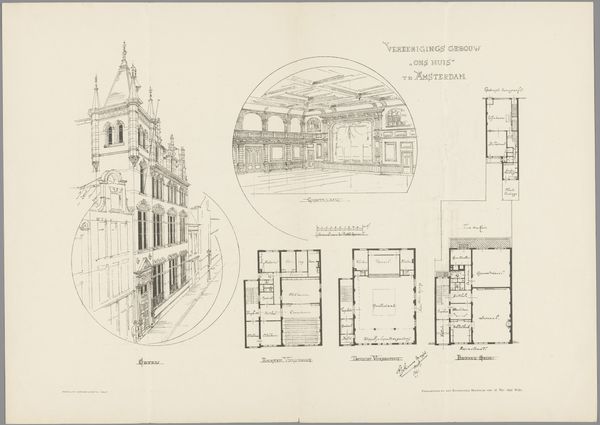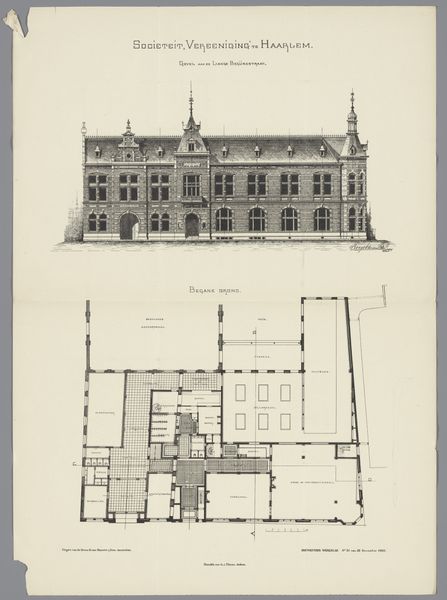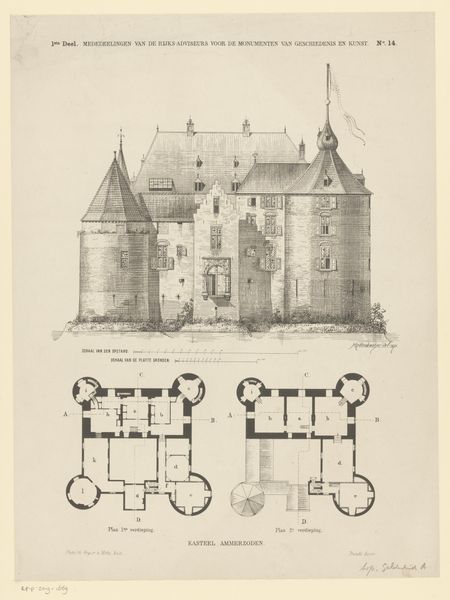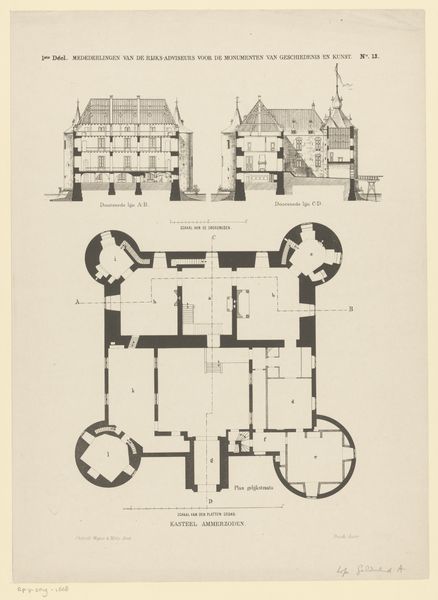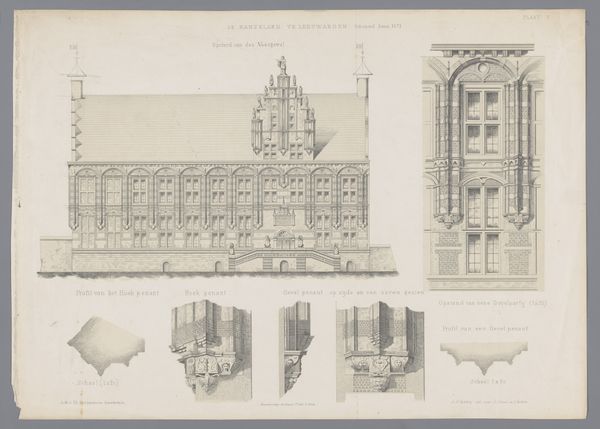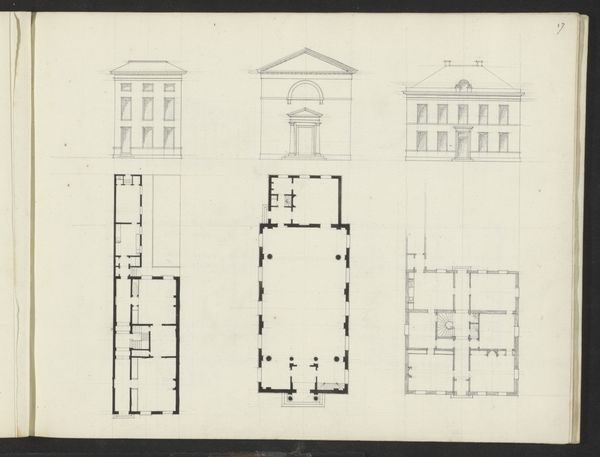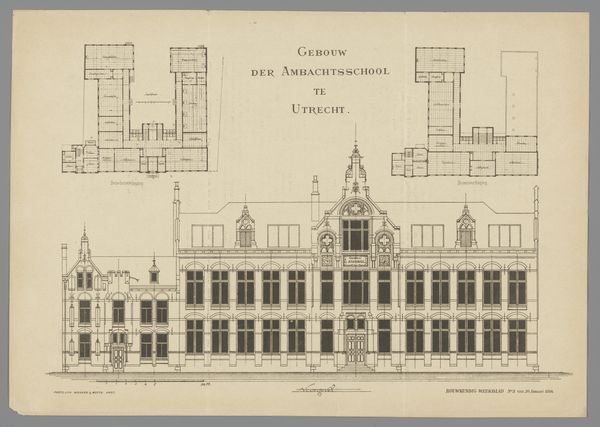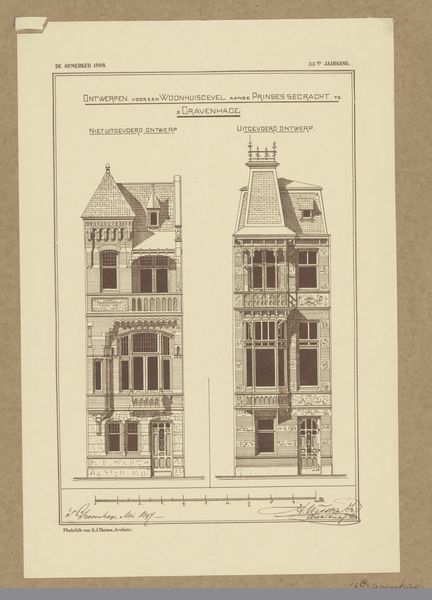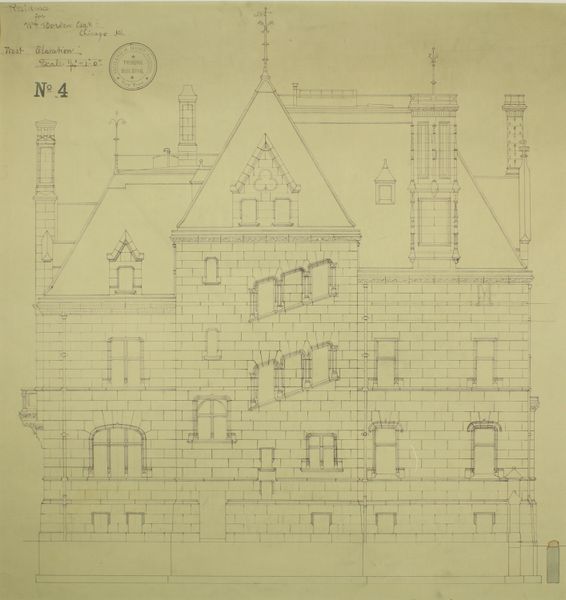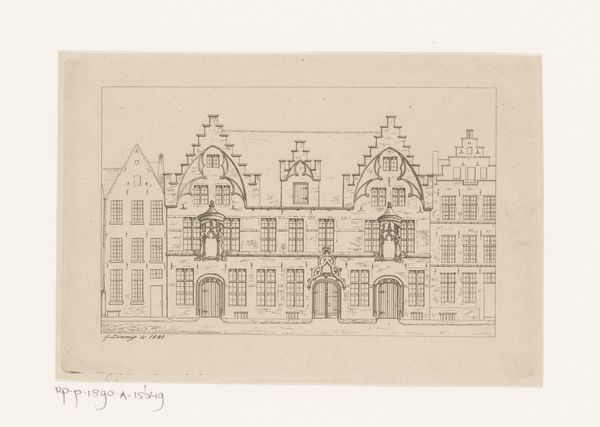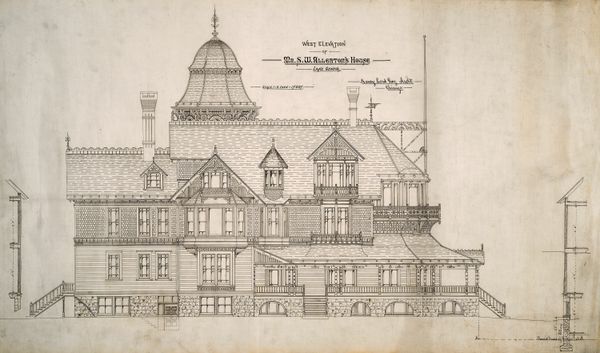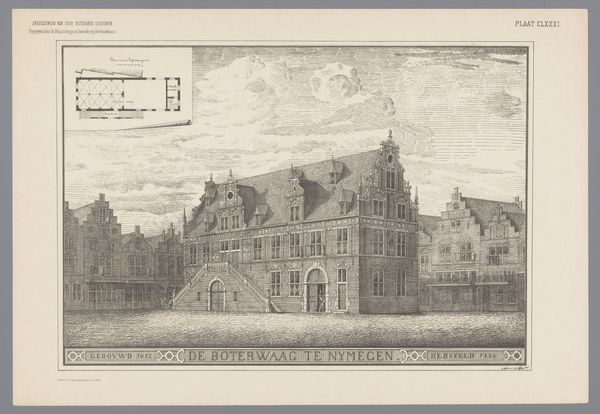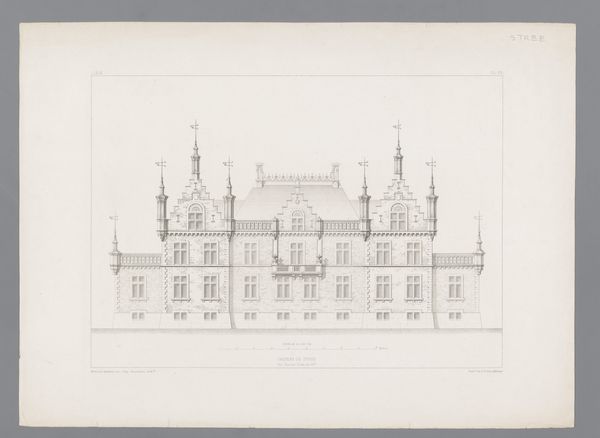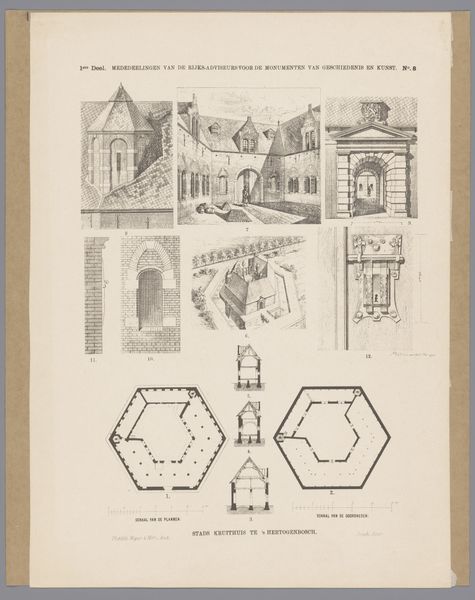
Reproductie van ontwerpen van huizen in Zwolle door architect S.J.H Trooster 1893
0:00
0:00
drawing, paper, ink, architecture
#
drawing
#
paper
#
ink
#
modernism
#
architecture
#
building
Dimensions: height 253 mm, width 358 mm
Copyright: Rijks Museum: Open Domain
Curator: This detailed 1893 ink drawing on paper, "Reproductie van ontwerpen van huizen in Zwolle door architect S.J.H Trooster," currently held at the Rijksmuseum, presents two elevations and floor plans of proposed houses. What strikes you about it? Editor: Well, I’m fascinated by how modern these buildings appear for something from the late 19th century! They look functional yet ornate, and the artist, Gerrit Jan Thieme, includes incredible details of the facades, right down to the brickwork. What’s your take? Curator: Indeed. I look at this and immediately consider the social context, the means of production involved. It speaks to a specific clientele—those with the financial means to commission such elaborate dwellings. But beyond the finished product, let’s consider the paper itself, the ink. What can those materials tell us? Editor: The materials? I suppose the choice of a precise ink drawing, instead of, say, a watercolor, suggests a desire for accuracy, for a plan that could be easily reproduced. Also, this reproduction, I am curious to know if it allowed the plan to be spread more quickly to other architects and possibly inspire new building styles, thus changing society? Curator: Precisely. Think about the rise of industrialization. This isn't just about aesthetics; it reflects access to particular papers and inks, advancements that streamline the architectural design process and the broader building trade, no? The ability to reproduce such drawings would have drastically changed the speed and scope of architectural projects. Editor: I never really thought about it that way. I was focused on the design, not the implications of its reproduction and dissemination. Thanks. Curator: That’s often the trick, isn't it? Seeing beyond the image to the material realities and social forces that shape it. It encourages a deeper understanding. Editor: Absolutely. Looking at it now, it speaks less about "Modernism" the aesthetic, and more about "modernization," in material terms. Thank you for pointing that out!
Comments
No comments
Be the first to comment and join the conversation on the ultimate creative platform.
